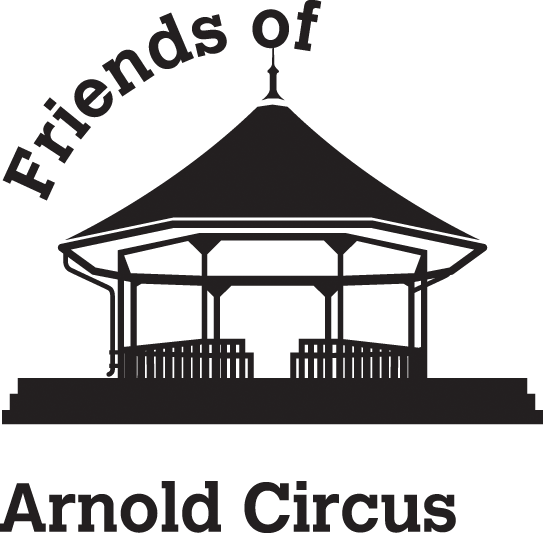Boundary Estate occupies the north-east corner of the London Borough of Tower Hamlets, and is a Victorian development of grand scale and imposing construction. It’s extraordinary in that the Boundary Estate was the realisation of the dream of one man – a tireless local vicar, determined to rid London of its most squalid and infamous slum. Like so many East End slums this area, situated so near to the walls of the City, had seen much better days, before unplanned and uncontrolled building turned the rural hamlet around St Leonard’s Church into a byword for crime and disease.
It was originally part of the garden of the Nunnery of St John the Baptist, Holywell. But in the 18th century the rapidly growing East End population was exerting pressure on space, and the land was turned over to housing. You can still see the origins of this expanded building activity at 74 Swanfield Street , the last remaining weaver’s house in the area. But even as Swanfield Street was laid out, the East End ’s great days as a weaving centre was behind it, with cheaper fabrics being produced on the Continent. And soon the new houses were subdivided, with each room home to small workshops and ‘manufactories’, where East Enders scraped a living making matches, matchboxes, clothes pegs, shoes and cheap clothes.
By the mid-1800s the area, bounded by Virginia Road to the north, Mount Street to the east, Boundary Street to the west, and Old Nichol Street to the south, was famous as the worst slum in London. Friars Mount, as it was then more poetically known, became the now infamous ‘Old Nichol’. The inhabitants were the poorest of the East End ’s homeworkers, and their miserable plight was graphically described in the Illustrated London News of 24 October 1863 :
‘The limits of a single article would be insufficient to give any detailed description of even a day’s visit. There is nothing picturesque in such misery. It is but one painful and monotonous round of vice, filth and poverty, huddled in dark cellars, ruined garrets, bare and blackened rooms, reeking with disease and death, and without the means, even if there were the inclination, for the most ordinary observations of decency and cleanliness.’
So notorious had the Old Nichol become that it caught the attention of two influential outsiders. The first was the Reverend Osborne Jay, who subsequently accepted the living of the parish in December 1886. It was to be a cheerless Christmas in the area Charles Booth named ‘the most poverty-stricken in London ’. 5,700 people were crammed into the tiny area. Crime was rife, street fights between the rival gangs were a regular event, the death rate was 40 per 1,000 – twice as high as the rest of Bethnal Green and four times that of London as a whole, and one child in four died before his or her first birthday. The Reverend Jay realised that simply preaching from his pulpit wouldn’t change things – most of his lost souls never strayed through the doors of his church. Instead he began to work on the streets, a cheerful and charismatic presence. Within ten years he had raised £25,000 to build a new church, social club, gym and lodging house in Old Nichol Street . But he wasn’t content in ministering to his parishioners’ social, physical and spiritual needs; he realised that nothing would really change until the Nichol was reduced to rubble and built anew. And so in 1890, he persuaded the newly formed London County Council (LCC) to clear the slum and build new flats.
The second influential outsider was writer Arthur Morrison, whom Jay persuaded to visit the area. The shocked writer poured his observations into the seminal A Child of the Jago. Victorians were horrified by the barely fictionalised account of a child’s struggle against poverty. So deep did it cut that when the Prince of Wales (the future Edward VII) opened the rebuilt estate in 1900, he mentioned Morrison’s book, saying: ‘Few indeed will forget this site who had read Mr Morrison’s A Child of the Jago.’ The irony was that by the time Morrison wrote his account, the Nichol was already half-demolished, and a bitter twist lay ahead for the inhabitants of this real-life ‘Jago’. The new flats comfortably housed 6,000 people, and statistics from the LCC had recorded 5,666 previously squeezed into the rat’s nest of streets and alleys. Before, the widest road was only 28ft across; some of the ground floors of houses were below street level, many of the houses were built back-to-back, and the average room was home to 2.25 people (with 107 rooms housing five or more). Now there rose huge blocks of flats, sited round the circular park of Arnold Circus (formally titled ‘Boundary Gardens’), with a bandstand provided for the residents and the blocks named after Thames beauty spots. But they weren’t the same 6,000 people as before. It was the ‘industrious poor’ who were rewarded with the new flats. Meanwhile, the residents of the Nichol were swept further into the nearby areas of Dalston or Bethnal Green, a move resulting in more overcrowding and new slums.
With thanks to Walks Through History – Exploring the East End by Rosemary Taylor.
